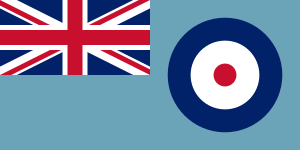MoD Boscombe Down
MoD Boscombe Down (ICAO: EGDM) is the home of a military aircraft testing site, located near the town of Amesbury in Wiltshire, England. The site is currently run, managed and operated by QinetiQ,[1] the private defence company created as part of the breakup of the Defence Evaluation and Research Agency (DERA) in 2001 by the UK Ministry of Defence (MoD). It is also the home of the Empire Test Pilots' School[1] (ETPS).
| MOD Boscombe Down | |||||||||||
|---|---|---|---|---|---|---|---|---|---|---|---|
| Amesbury, Wiltshire in England | |||||||||||
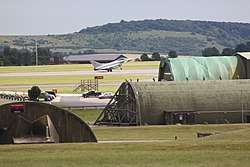 A Eurofighter Typhoon at MOD Boscombe Down. | |||||||||||
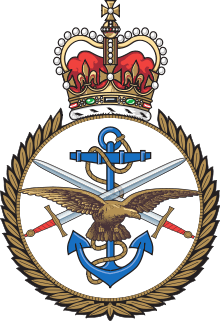 | |||||||||||
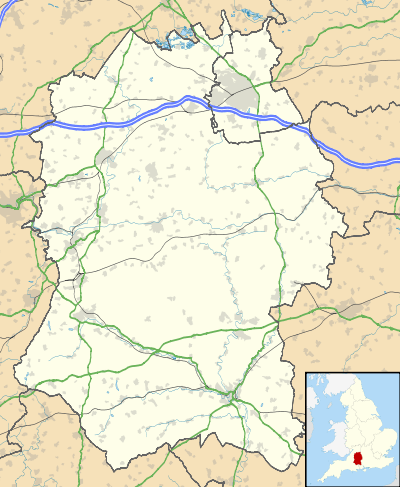 MOD Boscombe Down Shown within Wiltshire | |||||||||||
| Coordinates | 51°09′27″N 01°44′49″W | ||||||||||
| Type | Military test and evaluation airfield | ||||||||||
| Site information | |||||||||||
| Owner | Ministry of Defence | ||||||||||
| Operator | QinetiQ and Royal Air Force | ||||||||||
| Website | https://www.ltpa.co.uk | ||||||||||
| Site history | |||||||||||
| Built | 1917[1] | ||||||||||
| In use | 1917–Present | ||||||||||
| Garrison information | |||||||||||
| Occupants |
| ||||||||||
| Airfield information | |||||||||||
| Identifiers | ICAO: EGDM, WMO: 03746 | ||||||||||
| Elevation | 124 metres (407 ft) AMSL | ||||||||||
| |||||||||||
The base was originally conceived, constructed, and operated as Royal Air Force Boscombe Down, more commonly known as RAF Boscombe Down, and since 1939, has evaluated aircraft for use by the British Armed Forces. The airfield has two runways, one of 3,212 metres (10,538 ft) in length, and the second 1,914 metres (6,280 ft). The airfield's evaluation centre is currently home to Rotary Wing Test Squadron (RWTS), Fast Jet Test Squadron (FJTS), Heavy Aircraft Test Squadron (HATS), Handling Squadron, and the Empire Test Pilots' School (ETPS).[2]
History
First World War
An airfield first opened at the Boscombe Down site in October 1917 and operated as a Royal Flying Corps Training Depot Station.[3] The airfield was known as Royal Flying Corps Station Red House Farm and trained aircrews for operational roles in France during the First World War.[1] Between opening and early 1919 the station accommodated No. 6 Training Depot, No. 11 Training Depot and No. 14 Training Depot.[4] When the United States of America entered the war in April 1917, the Royal Flying Corps began training ground and aircrews of Aviation Section of the US Army at the airfield. During 1918 the 166th Aero Squadron and 188th Aero Squadron were present.[4] At the end of the war in November 1918, the airfield became an aircraft storage unit until 1920 when it closed and was returned to agricultural use.[3]
Inter-war period
In 1930 the site reopened as Royal Air Force Boscombe Down as a bomber station in the Air Defence of Great Britain command, the fore-runner of RAF Fighter Command.[3] The first unit to operate from the new airfield was No. 9 Squadron which started operating the Vickers Virginia heavy bomber on 26 February 1930. A second Virginia unit, No. 10 Squadron, arrived on 1 April 1931 and also operated the Handley Page Heyford. Both squadrons generated crews to allow the creation of new bomber squadrons at other airfields and . The following RAF squadrons were based at Boscombe Down between 1930 and 1939:
- No. 9 Squadron RAF;[1] between 1930 and 1935, with the Vickers Virginia;[5]
- No. 10 Squadron RAF;[1] between 1931 and 1937, with the Virginia, and the [5]
- No. 51 Squadron RAF;[1] between 1937 and 1938, with the Virginia, Avro Anson, and the Armstrong Whitworth Whitley;[6]
- No. 58 Squadron RAF;[1] between 1937 and 1938, with the Anson, and the Whitley;[7]
- No. 78 Squadron RAF;[1] between 1936 and 1937, with the Heyford;[8]
- No. 88 Squadron RAF;[1] between 1937 and 1939, with the Hawker Hind, and the Fairey Battle;[9]
- No. 97 Squadron RAF;[1] between 1935 and 1937, with the Heyford;[10]
- No. 150 Squadron RAF;[1] between 1938 and 1939, with the Battle;[11]
- No. 166 Squadron RAF;[1] between 1936 and 1937, with the Heyford;[12]
- No. 214 Squadron RAF;[1] between 1935 and 1935, with the Virginia;[13]
- No. 217 Squadron RAF;[1] between 1937 and 1937, with the Anson;[13]
- No. 218 Squadron RAF;[1] between 1938 and 1939, with the Battle;[14]
- No. 224 Squadron RAF;[1] between 1937 and 1937, with the Anson.[15]
Second World War
The Aeroplane and Armament Experimental Establishment (A&AEE) arrived from RAF Martlesham Heath, Suffolk, on 9 September 1939, shortly after the outbreak of the Second World War.[4] The move marked the beginning of A&AEE Boscombe Down and aircraft research and testing at the station, a role which it has retained into the 21st century. About fifty aircraft and military and civilian personnel had arrived by mid-September 1939.[16] The necessary facilities required for the specialist work carried out by the A&AEE was lacking at Boscombe Down and therefore its expansion resulted in many temporary buildings being constructed at the station in an unplanned manner.[3]
- No. 35 Squadron RAF;[1] during 1940, with the Handley Page Halifax I;[17]
- No. 56 Squadron RAF;[1] during 1940, with the Hawker Hurricane I;[7]
- No. 109 Squadron RAF;[1] between 1940 and 1942, with the Whitley, Anson, and Vickers Wellington;[18]
- No. 249 Squadron RAF;[1] during 1940, with the Hurricane.[19]
Cold War
Boscombe was used to test and evaluate many aircraft flown by the British Armed Forces during the Cold War. First flights of notable aircraft include the English Electric P 1, forerunner of the English Electric Lightning, the Folland Gnat and Midge, Hawker P.1067 (the prototype Hunter), Westland Wyvern, and the BAC TSR.2.
Part of the base was also used by the RAF School of Aviation Medicine.
Aviation trial and evaluation centre
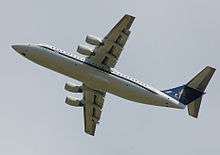
With the end of the Cold War, the site was renamed the Aircraft and Armament Evaluation Establishment (AAEE) in 1992. All experimental work was moved to the Defence Research Agency (DRA). Responsibility for the site passed from the MoD Procurement Executive to the Defence Test and Evaluation Organisation (DTEO) in 1993.
During this period, the station may have been involved in assisting the United States with its black projects. On 26 September 1994, after an aircraft crashed on landing due to a nosewheel collapse, a USAF C5 Galaxy was redirected to the station. It is speculated that the crashed plane was an Aurora, a hypersonic spy plane.[20] Whatever it was, it was disassembled and returned to the US by the C5 Galaxy. Both the British and American Governments have refused to comment on the incident.[21][22]
Subsequently to the Defence Evaluation and Research Agency (DERA) in 1995. Following the creation of QinetiQ in 2001, a twenty-five-year Long Term Partnering Agreement (LTPA) was established with the MoD. Boscombe Down remains a government military airfield, but operated by QinetiQ on behalf of the MoD. The Joint Test and Evaluation Group (JTEG) was established under the control of RAF Air Command, and together with QinetiQ, forms the Aircraft Test and Evaluation Centre (ATEC). This unique partnership is charged with the test and evaluation of future and in-service military aircraft for all arms of the British Armed Forces. The military personnel of the JTEG play a central role in the test and evaluation process alongside their civilian QinetiQ colleagues.
From 1 May 2007, Boscombe Down became the home of the Joint Aircraft Recovery and Transportation Squadron (JARTS); which was combined from the two Royal Navy and Royal Air Force elements who were responsible for aircraft moves and post-crash management.[23]
In October 2007, it was announced that RAF Boscombe Down would become a Quick Reaction Alert (QRA) airfield from early 2008, offering round-the-clock fighter coverage for the South and South West of UK airspace.[24]
A small part of Boscombe's history is being preserved in the United States. The Anglo American Lightning Organisation (AALO) are returning to flight the former ETPS English Electric Lightning T.5, XS422.[25] The group is basing the restoration in the US, as the UK Civil Aviation Authority (CAA) is expected to refuse permission for the aircraft to fly in the UK. The voluntary group, made up of RAF and former RAF engineers, as well as civilian volunteers, has been carrying out a 'floor-up' restoration, and as of spring 2008, were around 80% mechanically complete. The project is currently seeking investors and supporters.[25]
The Heavy Aircraft Test Squadron (HATS) at RAF Boscombe Down was responsible for the flight testing of heavy aircraft (multi-engine types). Prior to the title of Heavy Aircraft Test Squadron, the flight testing of multi-engined aircraft was conducted by 'B Squadron'. Following-on from B Squadron, the department became known as Fixed Wing Test Squadron (FWTS); however, during the late 1980s, the title once more changed to that of the Heavy Aircraft Test Squadron.On 16 June 2009, HATS formally handed over its flight testing duties to the newly re-formed 206(R) Squadron, which forms part of the Air Warfare Centre, who are headquartered at RAF Waddington.
On 1 April 2010, the Fast Jet Test Squadron (FJTS) was amalgamated into No.41(R) Squadron to create a new entity, 41 Squadron Test and Evaluation Squadron, based at RAF Coningsby.
The following units were here at some point:
- No. 4 Group Experimental Flight[1]
- No. 6 Training Depot Station[1]
- No. 11 Training Depot Station[1]
- No. 13 Joint Services Trials Unit[1]
- No. 22 Joint Services Trials Unit[1]
- No. 29 Joint Services Trials Unit[1]
- No. 42 Squadron RAF[1]
- No. 75 (Bomber) Wing RAF[1]
- 819 Naval Air Squadron[1]
- 893 Naval Air Squadron[1]
- 899 Naval Air Squadron[1]
- No. 2780 Squadron RAF Regiment[1]
- No. 2786 Squadron RAF Regiment[1]
- Aeroplane and Armament Experimental Establishment[1]
- Aircraft and Armament Evaluation Establishment RAF[1] became Test and Evaluation Centre[26]
- Aircraft Gun Mounting Establishment RAF[1]
- Assessment and Evaluation Centre RAF[1]
- Blind Approach Training and Development Unit RAF[1] became Wireless (Intelligence) Development Unit RAF[27]
- Bomber Development Unit RAF[1]
- Bustard Flying Club[1]
- Handling Flight RAF[1] became Handling Squadron RAF[1]
- High Altitude Flight (A&AEE)[1]
- Intensive Flying Development Flight RAF[1]
- Intensive Flying Development Unit[1]
- Meteorological Research Flight RAF[1] became Meteorological Research Unit RAF[28]
- RAF Centre of Aviation Medicine Flight[1]
- Special Duties Flight RAF[1]
- Strike Attack Operational Evaluation Unit (SAOEU)[1]
- Tornado Operational Evaluation Unit RAF[1]
Current RAF units using the airfield
The following flying and non-flying units are based at MOD Boscombe Down.[29][30][31][32][33]
- 744 Naval Air Squadron – Merlin HM2 and Chinook Mk5/6. Under the Mission Systems and Armament Test and Evaluation Squadron.[34][35]
Aircraft Test and Evaluation Centre (operated in partnership with QinetiQ)
- Empire Test Pilots School – Various
- Rotary Wing Test and Evaluation Squadron (RWTES) – Various
- An element of No. 6 Flying Training School
- Bristol University Air Squadron – Grob Tutor T1
- Southampton University Air Squadron – Grob Tutor T1[1] (SUAS)[36]
No. 38 Group (Air Combat Service Support) RAF
- An element of No. 85 (Expeditionary Logistics) Wing, RAF A4 Force
- An element of RAF Medical Operations
- RAF Centre of Aviation Medicine
- Aviation Medicine Flight – BAE Hawk T1
- RAF Centre of Aviation Medicine
References
Citations
- "Boscombe Down (Red House Farm)". Airfields of Britain Conservation Trust. Retrieved 15 August 2017.
- "Empire Test Pilot School contact information". QinetiQ.com. QinetiQ. Archived from the original on 16 February 2015. Retrieved 16 February 2015.
- "MoD Boscombe Down: 1917–2007". Royal Aeronautical Society Boscombe Down Branch. Retrieved 15 August 2017.
- "RAF/MoD Boscombe Down". Air of Authority – A History of RAF Organisation. Retrieved 15 August 2017.
- Jefford 1988, p. 27.
- Jefford 1988, p. 41.
- Jefford 1988, p. 43.
- Jefford 1988, p. 48.
- Jefford 1988, p. 51.
- Jefford 1988, p. 53.
- Jefford 1988, p. 62.
- Jefford 1988, p. 64.
- Jefford 1988, p. 71.
- Jefford 1988, p. 72.
- Jefford 1988, p. 73.
- Mason 2010, p. 6.
- Jefford 1988, p. 37.
- Jefford 1988, p. 55.
- Jefford 1988, p. 78.
- "STEALTH". Key Publishing Air Forces Monthly. 10 June 2016.
- "RAF Boscombe Down's Black Day". Retrieved 14 September 2008.
- Bellamy, Christopher; Walker, Timothy (14 March 1997). "Secret US spyplane crash may be kept under wraps". The Independent.
- Nadin, Michael (October 2009). "Crash and Smash no more" (PDF). RAF.mod.uk. Royal Air Force. p. 38. Archived from the original (PDF) on 9 October 2010. Retrieved 29 March 2017.
- Air base in front line fully-armed – Salisbury Journal, Monday 29 October 2007
- "Anglo American Lightning Organisation". Lightning422supporters.co.uk. UK: AALO. Retrieved 17 June 2017.
- Lake 1999, p. 26.
- Lake 1999, p. 37.
- Lake 1999, p. 138.
- "MOD Boscombe Down – Who's Based Here". Royal Air Force. Retrieved 14 July 2018.
- "MOD Boscombe Down". LTPA. Retrieved 29 June 2017.
- "Air Warfare Centre Units". RAF Waddington. Archived from the original on 14 July 2015. Retrieved 29 July 2017.
- Nadin, Michael (October 2009). "Crash and Smash no more" (PDF). Royal Air Force. p. 38. Archived from the original (PDF) on 9 October 2010. Retrieved 29 June 2017.
- "Royal Air Force Centre of Aviation Medicine" (PDF). RAF Henlow. Archived from the original (PDF) on 31 July 2017. Retrieved 31 July 2017.
- Royal Navy (14 November 2018). "Naval squadron re-forms after 60 years to test cutting-edge weaponry". Royal Navy. Retrieved 14 November 2018.
- Fleet Air Arm Association (19 October 2018). "744 NAS Commissioning". Fleet Air Arm Association. Retrieved 14 November 2018.
- "Southampton University Air Squadron". RAF.mod.uk. Royal Air Force. Retrieved 11 October 2013.
Bibliography
- Jefford, C G (1988). RAF Squadrons. A comprehensive record of the movement and equipment of all RAF squadrons and their antecedents since 1912. Shrewsbury: Airlife. ISBN 1-85310-053-6.
- Mason, Tim. (2010). The Secret Years: Flight Testing at Boscombe Down, 1939-1945. Crowborough, UK: Hikoki Publications. ISBN 978-1-9021-0914-5.
External links
| Wikimedia Commons has media related to RAF Boscombe Down. |
- MOD Boscombe Down
- QinetiQ homepage
- Boscombe Down — at QinetiQ
- Airport information for EGDM at World Aero Data. Data current as of October 2006.
- Boscombe Down — an Apprentice's perspective
